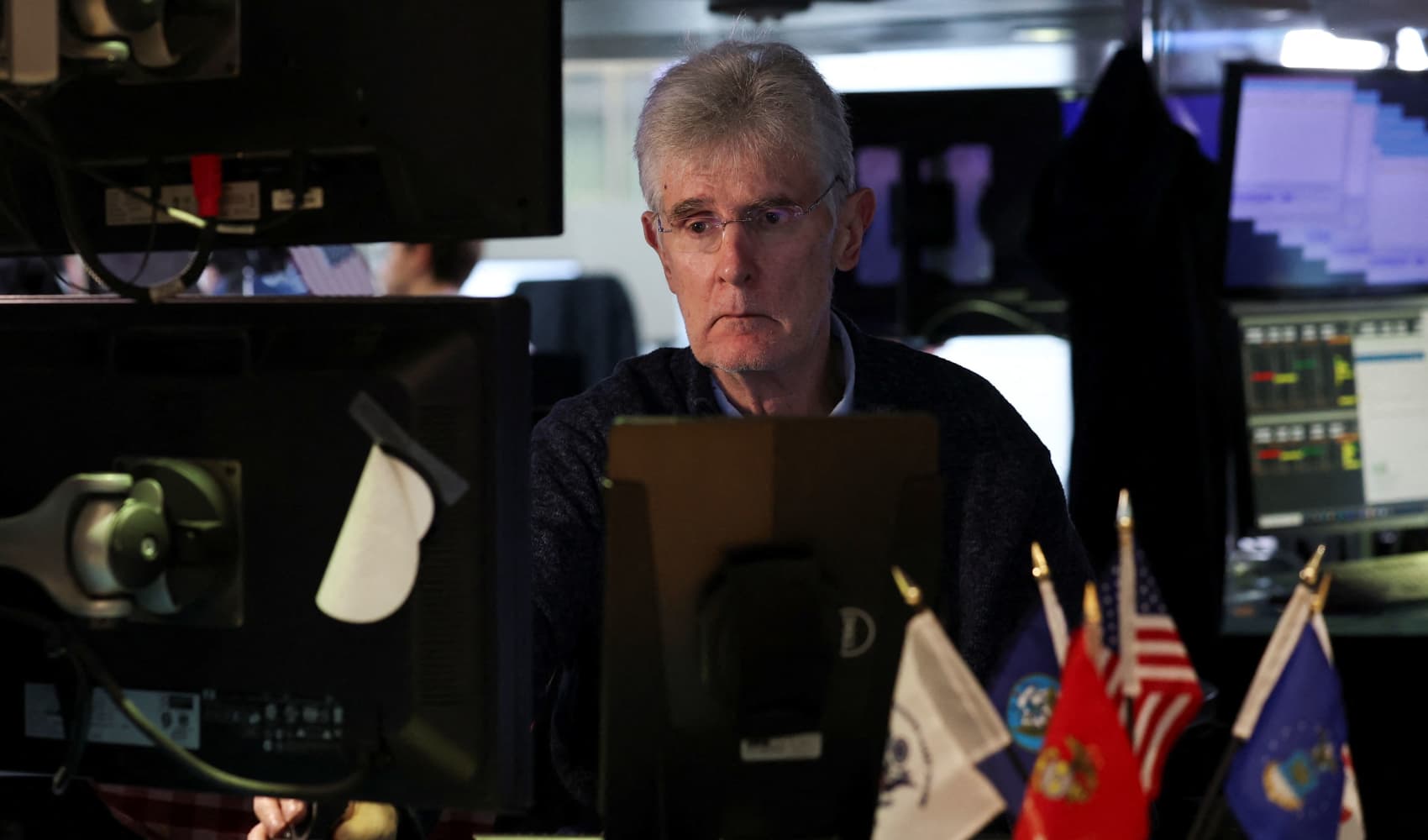Tariffs Trump Spending? IMF on Eurozone's Fiscal Fight
Eurozone Wobbles: Can German Spending Beat Trump's Tariffs?
Introduction: A Balancing Act for Europe's Economy
The Eurozone's economic outlook has become a bit of a tightrope walk, hasn't it? We're facing a complex situation where good news in one area seems to be constantly overshadowed by challenges elsewhere. The International Monetary Fund (IMF) recently weighed in, painting a picture of an economy struggling to find its footing amidst global uncertainties. In particular, Alfred Kammer, the IMF's European department director, highlighted a critical dynamic: can Germany's fiscal stimulus, specifically its infrastructure spending, truly offset the negative impact of tariffs, especially those imposed by the U.S.? It's a question that has serious implications for the future of the Eurozone.
The IMF's Revised Outlook: A Global Slowdown
The IMF's recent assessment wasn't exactly brimming with optimism. They lowered their growth projections not only for the Eurozone but also for major economic players like the U.S., the U.K., and several Asian nations. What's the common denominator? According to the IMF, President Trump's "volatile tariff policy" is a major culprit. These tariffs, intended to protect domestic industries, are instead creating a ripple effect of uncertainty and disruption throughout the global economy.
Germany's Fiscal Response: A Shot in the Arm?
Seeing the economic clouds gathering, Germany has taken a step towards boosting its own economy with a significant infrastructure spending bill. Think of it as a shot in the arm for the Eurozone. More spending on roads, bridges, and other crucial infrastructure projects is expected to stimulate demand, create jobs, and generally give the economy a much-needed lift. But will it be enough?
The Scale of the Stimulus: Is it Sufficient?
The question on everyone's mind is whether the German infrastructure spending is substantial enough to truly make a difference. Is it a mere band-aid on a larger wound, or a genuine catalyst for growth? The answer isn't straightforward. While the spending is undoubtedly a positive step, the sheer scale of the negative impact from tariffs may be too great to fully counteract.
Tariffs: A Drag on Growth
Let's face it: tariffs are a pain. They're like a tax on international trade, increasing costs for businesses and consumers alike. This can lead to reduced demand, lower investment, and ultimately, slower economic growth. The IMF believes that the tariffs imposed by the U.S. will act as a significant drag on the Eurozone's economy.
The Uncertainty Factor: A Dampening Effect
Beyond the direct economic impact of tariffs, there's the added uncertainty they create. Businesses are hesitant to invest and expand when they don't know what the future holds. This uncertainty can dampen economic activity even before the tariffs themselves take full effect. It's like driving in dense fog – you're less likely to accelerate, even if the road is clear.
Kammer's Assessment: A Slight Offset
Alfred Kammer's assessment is realistic, if not entirely encouraging. He acknowledges that the German infrastructure spending will provide a boost to growth in the Eurozone over the next two years. However, he also emphasizes that this boost will only "slightly offset" the negative impact of U.S. tariffs. In other words, while Germany's efforts are commendable, they're not enough to completely negate the damage.
The ECB's Role: Interest Rate Decisions
The European Central Bank (ECB) plays a crucial role in managing the Eurozone's economy. One of its main tools is setting interest rates. Lower interest rates can stimulate borrowing and investment, while higher rates can cool down an overheating economy. With growth risks looming, the ECB has been under pressure to cut interest rates further.
One More Cut This Year?
Kammer suggests that the ECB should only cut interest rates once more this year, despite the growth risks. This implies a cautious approach, perhaps reflecting concerns about the potential side effects of excessively low interest rates, such as asset bubbles or negative impacts on banks.
Beyond Germany: Other Factors at Play
It's important to remember that Germany's fiscal policy and U.S. tariffs aren't the only factors influencing the Eurozone's economy. Other variables, such as global demand, political stability, and technological innovation, also play a significant role. The Eurozone's overall economic health is a complex interplay of many different forces.
Brexit and Geopolitical Risks
Let's not forget about Brexit, which continues to cast a shadow of uncertainty over the European economy. And then there are various geopolitical risks around the world that could potentially disrupt trade and investment flows. These factors add further complexity to the Eurozone's economic outlook.
The Need for Structural Reforms
Beyond short-term fiscal and monetary policies, the Eurozone also needs to focus on long-term structural reforms. These reforms could include measures to improve competitiveness, reduce bureaucracy, and promote innovation. Such reforms are essential for boosting the Eurozone's long-term growth potential.
Boosting Productivity: A Key Challenge
One of the key challenges facing the Eurozone is boosting productivity. Productivity growth has been sluggish in recent years, which has held back economic growth. Investing in education, training, and technology can help to improve productivity and make the Eurozone more competitive.
A Call for International Cooperation
Ultimately, addressing the challenges facing the Eurozone requires international cooperation. Tariffs and trade wars are a zero-sum game that hurts everyone involved. A more collaborative approach to trade and economic policy would benefit all countries.
Finding Common Ground
Finding common ground and working together to address global economic challenges is essential for ensuring a stable and prosperous future. This requires open communication, mutual understanding, and a willingness to compromise.
Conclusion: Navigating a Turbulent Landscape
The Eurozone is navigating a turbulent economic landscape, facing headwinds from global trade tensions and geopolitical uncertainty. While Germany's fiscal stimulus provides a welcome boost, it's unlikely to fully offset the negative impact of tariffs. The ECB faces a delicate balancing act in managing monetary policy. Ultimately, the Eurozone's economic future depends on a combination of sound domestic policies, structural reforms, and international cooperation. It's a challenging situation, but with careful planning and a collaborative spirit, the Eurozone can weather the storm.
Frequently Asked Questions
Q1: What exactly are tariffs and how do they impact the Eurozone economy?
Tariffs are taxes imposed on imported goods. They increase the cost of these goods, making them less competitive and potentially reducing demand. For the Eurozone, this means lower exports, reduced investment, and slower economic growth, especially if tariffs are imposed by major trading partners like the U.S.
Q2: How significant is Germany's infrastructure spending bill in the grand scheme of the Eurozone's economy?
It's a positive step, but its impact is limited. Think of it like adding a bucket of water to a leaky pool – it helps a little, but it doesn't fix the leak. While the spending will stimulate growth, the IMF believes it won't completely compensate for the negative effects of global trade tensions and tariffs.
Q3: Why is the IMF advising the ECB to only cut interest rates once more this year?
The ECB is walking a tightrope. Lowering interest rates too much can lead to unintended consequences like asset bubbles and put pressure on banks. The IMF likely believes that one more rate cut strikes a balance between supporting growth and mitigating potential risks.
Q4: What other factors, besides tariffs and German spending, are influencing the Eurozone's economic outlook?
Several factors are at play! These include global demand (especially from emerging markets), Brexit's ongoing impact, geopolitical risks in various parts of the world, and the pace of technological innovation. These elements combined create a complex web that determines the Eurozone's economic health.
Q5: What structural reforms could the Eurozone implement to boost its long-term growth potential?
The Eurozone could focus on reforms that improve competitiveness, reduce bureaucratic hurdles, and encourage innovation. Specifically, this might involve streamlining regulations, investing in education and training to boost productivity, and promoting research and development to foster technological advancements. These measures would strengthen the Eurozone's foundations and pave the way for sustainable growth.

